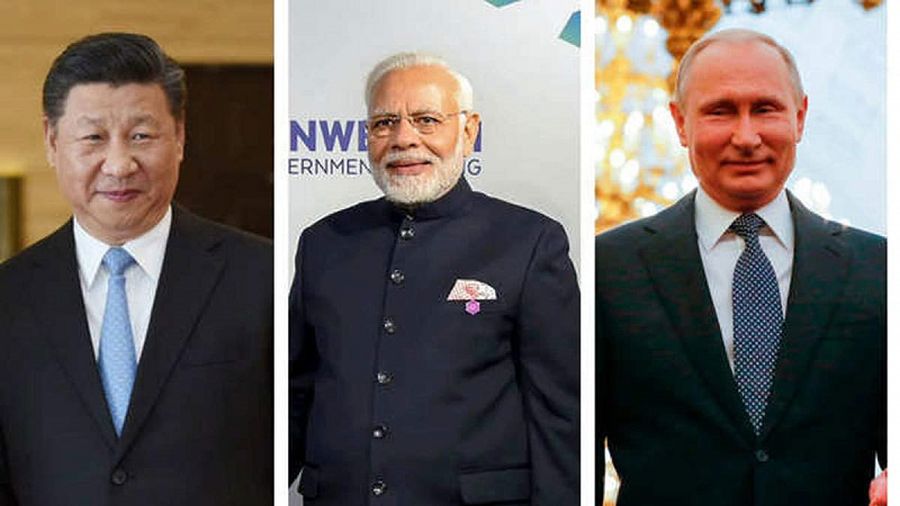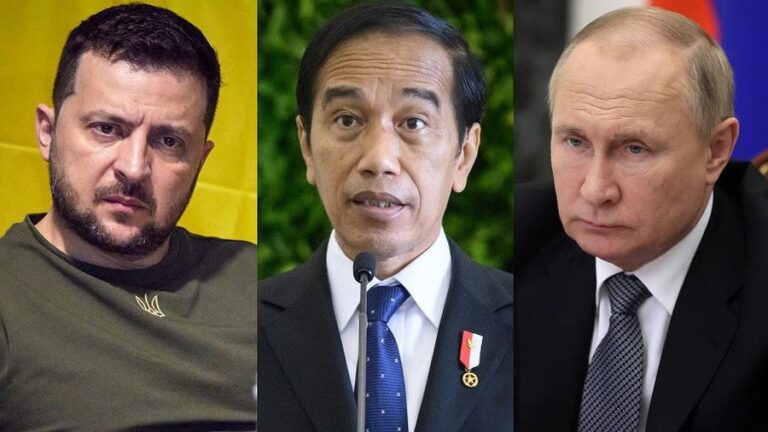Will a Russia-India-China Heads of State Summit Be Held This Year?
Very strategic shifts have recently taken place in Eurasia.
Russian presidential aide Yuri Ushakov revealed in mid-December after the video meeting between Chinese President Xi Jinping and Russian President Vladimir Putin that “The topic of cooperation in the Russia-India-China format was addressed.” According to him, the two world leaders “agreed to continue exchanging opinions in this regard and to endeavor to hold the next summit within the RIC framework in the near future.” It would advance these countries’ common cause of peace, stability, and development in Eurasia if their leaders convened another Russia-India-China (RIC) heads of state summit this year.
The RIC countries jointly participate in BRICS and the Shanghai Cooperation Organization (SCO). Through their strategic coordination in these platforms, they seek to safeguard the primacy of the UN Charter in international relations and thus ensure genuine equality between nations. Their efforts greatly accelerate the irreversible global systemic transition to multipolarity, and their trust-based ties are crucial for ensuring that the supercontinent gradually integrates into a community of common destiny. It’s therefore not an exaggeration to say that RIC is one of the engines of the multipolar world order.
Precisely for that grand strategic reason, however, the US actively attempted to divide and rule China and India by perniciously encouraging the latter to contribute to its anti-Chinese “containment” campaign. This was done in a desperate but ultimately doomed bid to delay America’s fading unipolar hegemony as long as possible. The administration of former US President Donald Trump made this among its top foreign policy priorities, but everything started falling apart over the past 18 months during the last half-year of his rule and the first full one of his successor Joe Biden.
American support to its new military-strategic ally during the summer 2020 Galwan River Valley clashes between China and India didn’t fulfill the expectations of New Delhi’s most hawkish anti-Chinese foreign policy faction. Almost immediately afterwards, the US then reaffirmed its threats to sanction India under the “Countering America’s Adversaries Through Sanctions Act” (CAATSA) for remaining loyal to its deal to purchase Russia’s S-400 air defense systems. These two moves resulted in Indian foreign policy moderates gaining influence over their hawkish peers.
America then violated India’s exclusive economic zone (EEZ) in early April during a so-called “freedom of navigation operation” (FONOP). India interpreted this as an ominous move meant to signal that their country wasn’t the US’ equal military-strategic ally like their establishment thought at the time due to the hawks’ influence over them, but was being humiliated as a vassal state. America’s chaotic withdrawal from Afghanistan and its surprise assembling of the Australia-UK-US (AUKUS) anti-Chinese alliance were the final straws in breaking the influence that the hawks held over India’s establishment.
Their foreign policy vision of allying with the US in order to “contain” China was completely discredited. The US exploited India as a proxy state by manipulating it into provoking China during the Galwan River Valley clashes without subsequently rushing to its rescue like the hawks expected to have happen. It then abused that country as a vassal state by threatening CAATSA sanctions against it and violating its EEZ. Afterwards, the US kept India out of the loop during its chaotic Afghan withdrawal and secretly transferred most of the Quad’s expected anti-Chinese military capabilities to AUKUS.
Abandoned by the country that the hawks convinced their establishment to believe was their equal military-strategic ally, India embraced the pragmatic vision put forth by its foreign policy moderates to recalibrate its multi-alignment policy away from its hitherto pro-American tilt and back towards its historical Russian-friendly direction. This directly led to President Putin’s visit to India in early December where the two countries signed a 99-paragraph joint statement aimed at comprehensively strengthening their strategic partnership.
India reinforced its strategic autonomy by bravely defying America’s sanctions threats, shortly after which US Secretary of State Antony Blinken put forth a Quad-like Asian network proposal of his country’s regional treaty allies during his recent trip to Indonesia, which by default omitted India. This suggested that the US is displeased with India’s latest multipolar adjustment to its multi-alignment policy, perhaps also due to late November’s successful RIC Foreign Ministers meeting which showed that India is willing to put aside its differences with China in order to cooperate on shared interests.
Altogether, very strategic shifts have recently taken place in Eurasia. The US abused India as a vassal state over the past 18 months, culminating in the transfer of the Quad’s anti-Chinese military capabilities to AUKUS, which prompted India to recalibrate its multi-alignment policy. This restored stability to Eurasia after that country’s hawkish foreign policy forces were discredited. The subsequent strengthening of Russian-Indian ties inspired India to pragmatically manage its disputes with China, which sets the stage for a possible RIC heads of state summit this year for strengthening their ties.







